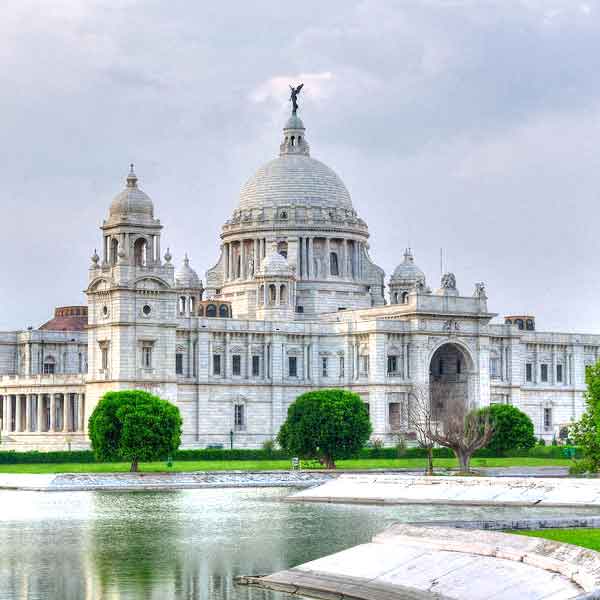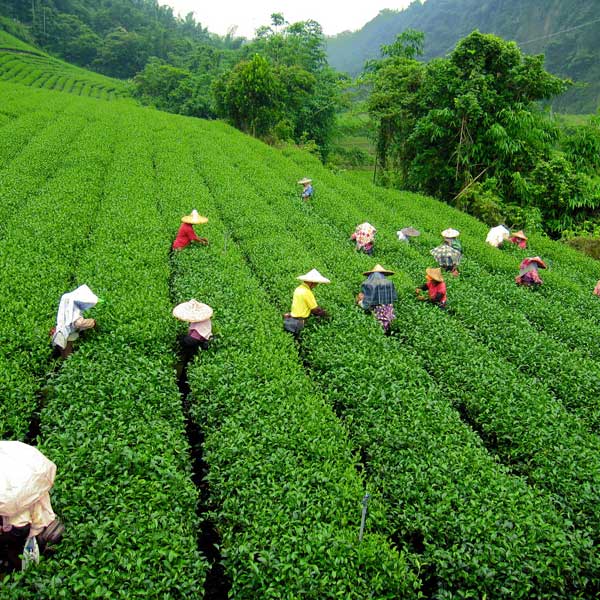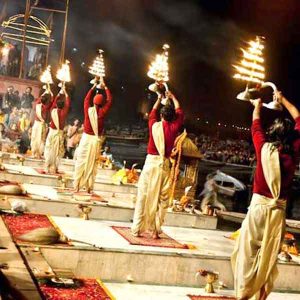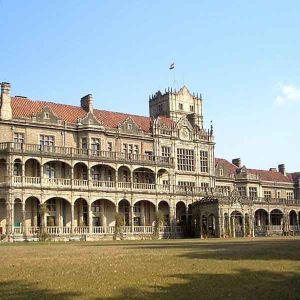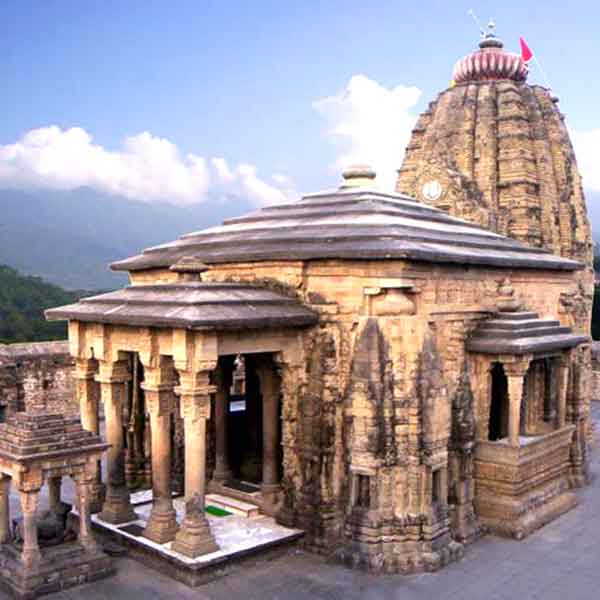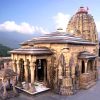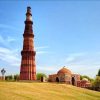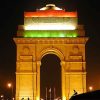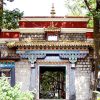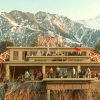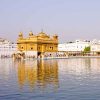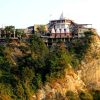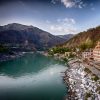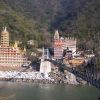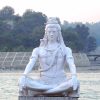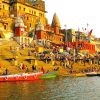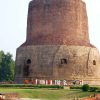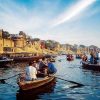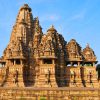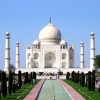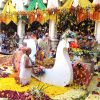Day 01: Arrive in Delhi.
On arrival into Delhi airport, you will be met by our representative, and then transferred to your hotel. Rest of day will be free. Overnight in Delhi.
Day 02: In Delhi.
After breakfast, set off for full-day tour of Delhi. Drive by India Gate, the Presidential Palace, lunch en-route, and then on to Old Delhi – visit impressive Red Fort, a UNESCO World Heritage site – a symbol of India’s Mughal past, and now of India’s sovereignty. Immerse yourself in the chaos of Chandni Chowk on cycle-rickshaw. Visit the Qutub Minar, a symbol of Mughal rule in India. Later in the day, stroll around magnificent Humayun’s Tomb and its gardens, and watch it change colour as the sun starts to set. Evening to relax and enjoy sumptuous Indian cuisine.
The India Gate in New Delhi (All India War Memorial) is at the eastern end of Rajpath and is similar to the ‘Arc de Triumph’. 42 metres high, it was built in memory of 90,000 soldiers who lost their lives in World War I and the Northwest Frontier operations in the Afghan war in 1919. The Presidential Palace, Rashtrapati Bhavan, is the official residence of the Indian president. Designed by Lutyens, a British architect, it was completed in 1929, mixing british architecture with Indian decoration. The Red Fort (Lal Qila) was built between 1638 and 1648 by Emperor Shah Jahan in order to display his wealth and power. The fort walls are 2km long and vary from 18 to 30 metres in height. The Humayun’s Tomb is of the Mughal era, built in 16th century by Haji Begum, senior wife of the second Mughal emperor Humayun. Overnight in Delhi.
Day 03: Delhi to Taragarh via Kangra.
Morning visit Qutub Minar, a UNESCO World Heritage Site, is the world’s tallest minaret. It’s height is 72.5 meters(237.8 ft). Construction commenced in 1193 under the orders of India’s first Muslim ruler Qutub-ud-din Aibak, The Qutub Minar is notable for being one of the earliest and most prominent examples of Indian-Islamic architecture. Surrounding the building are many fine examples of Indian artwork from the time it was built in 1193.
Afternoon transfer to airport for a flight to Kangra. On arrival early evening drive (1.30 min) to the Taragarh Palace. Formerly known as Al Hilal (land of the crescent moon), Taragarh Palace was built in 1931 by the 27 year old Nawab of Bahawalpur as a large European-style summer residence for himself up in the cool Himalayan jungle of the Kangra district. He laid out lush gardens, built a glass pavilion and a mosque. It was bought by the royal family of Jammu & Kashmir in 1951 for the Maharani who lived there for several years. It is now run as a hotel by the present royal family.
In the evening, we visit Baijnath Temple, a Shiva temple dedicated to Shiva Vaidyanatha. It is supposed to be the temple where Ravana worshipped Shiva to gain immortality. The Baijnath is one of the twelve ‘Jyotirlingas’ and is thronged with pilgrims at the festival of Shivratri. Overnight in Taragarh Palace.
Day 04: In Taragarh.
Morning yoga/meditation. Afterwards, we drive to Sherabilling Monastery, one of the world’s largest Buddhist teaching centers. The monks received a Grammy for their Sacred Buddhist Chanting. Afternoon attend the monks’ prayer and chanting session. Overnight in Taragarh Palace.
Day 05: Taragarh to Dharamsala (McCleod Ganj).
An hour and a half’s drive will take us to the headquarters of Tibet in Exile, Dharamsala. Enroute, we stop at the Norbulinka Institute, which is a major center for Buddhist teaching and practical work. Named after the summer residence of the Seventh Dalai Lama, it was set up to ensure the survival of the Tibetan Buddhism cultural heritage. Over 100 students learn a variety of crafts in wood, metal, silk and thangka painting. The temple has a 4.5 meter (15 foot) high gilded statue of The Buddha and over 1000 painted images.
After checking into our hotel, we enjoy a guided walking tour of the town, visit the main prayer wheel, and a nunnery, Museum of Buddhist Artifacts, and some free time to stroll town independently & shop. Attend early evening puja at Kalachakra Temple (pending occurrence). Overnight in Dharamsala.
Day 06: Dharamsala to Amritsar (140 km/approx 5 hrs).
In the early morning, at 6 am, we walk to the Namgyal Monastery (Dalai Lama’s monastery) to witness the monks chanting/meditation. We join the locals for a walk circumambulating the monastery complex. It is a breathtaking and inspiring experience–not to be missed! The walk will take 20-30 minutes, depending on how long you care to linger at the mid-point, where there are large prayer wheels and often monks chanting and playing music while locals pray at the chortens.
Return to hotel for breakfast and depart by 9 am for the drive to Amritsar (140 km/approx 5 hrs) Amritsar is in the state of Punjab, in the Himalayan foothills called the Shivaliks and one of the most ancient and fascinating cities in India. It is an important seat of Sikh history and culture. The Golden Temple was founded by the fourth Guru of the Sikhs, Guru Ramdas, and completed by his successor Guru Arjan Dev. It is famous for its full golden dome, one of the most sacred pilgrim sites for Sikhs. The Mandir is built on a 67-foot square of marble and is a two-storied structure. Maharaja Ranjit Singh had the upper half of the building adorned with approximately 400 kg of gold leaf. The Golden Temple is surrounded by a number of other temples.
On arrival we check into hotel and lunch (pay direct). Afterwards, we will witness the religious traditions of the Sikhs at the Golden Temple during a guided tour by one of the Sikh priests as well as time to stroll independently and reflect/meditate. Hypnotic meditative music plays as we walk the path with the pilgrims around the lake. We will enter various buildings, one where the Guru Granth Sahib or Adi Sri Guru Granth Sahib, the holy scripture is read alod from 4 am-10 pm. It is a voluminous text of 1430 angs (parts), compiled and composed during the period of Sikh Gurus, from 1469 to 1708. A collection of hymns or shabad, the text describes what God is like and the right way to live. Guru Gobind Singh (1666-1708), the tenth of the Sikh Gurus, affirmed the sacred text Adi Granth as his successor, terminating the line of human Gurus, and elevating the text to Guru Granth Sahib, the final Guru of the Sikhs.
Thousands of pilgrims arriving each day are offered shelter and food prepared and served by volunteers. The pilgrims travel for days from all over India, often on foot. The temple complex is a community run by volunteers and is truly amazing to witness the efficiency by which thousands are feed each day and also inspiring, as elsewhere in India, to see the devotion of the people to their faith. Voluntary service is one of the main paths of Sikhism. Eveyone is contributing in some way or the other at the shrine; chopping veggies, cleaning utensils, making chappatis, cooking daal, serving, cleaning, offering water, participating in ongoing maintenance and repair. Everyone is giving back to humanity by way of selfless service. For those in the group who would like to participate, we will have an opportunity to volunteer in the kitchen.
Just before sunset we travel to Wagah, the border town between India and Pakistan, 32km (20 miles) from Amritsar. Here we will experience the nightly flag ceremony with the locals. It is an exciting high-kicking, toe-stepping, quick-marching ceremony wherein the Indian and Pakistani flags are lowered on either side of the only border that remains open between the two countries. A number of officers from each team put on a performance to the satisfaction of the cheering, chanting crowds, seated on concrete grandstands on either side. The exercise ends with the slamming of the border gates, at which time each side’s flag is urgently carried to a room for overnight safekeeping. The Flag Ceremony is a touching, memorable experience.
We return to the hotel for dinner and then a return visit to see Golden Temple all lit up after dark.
Day 07: Amritsar to Haridwar.
Morning train to Haridwar. On arrival, check in to the hotel. We spend the day in Haridwar visiting various sites including the Neel Parvat Temple, dedicated to the Goddess Chandi Devi (Durga), which is on top of a hill overlooking the Ganges and about 6 km (3.7 miles) from Haridwar. We reach the temple via a ropeway. Local Indian women will be there performing devotionals to the goddess.
Later go down to the bathing ghats for the evening prayer ceremony, “aarti”. In Hindu homes and temples, the “aarti” ceremony, performed at twilight, is one of the most important parts of the day. The lighting of a lamp, as the sun is setting, is supposed to ensure the presence of the god of light and fire in the house. Amid singing and chanting of devotional songs and hymns, the devotees line up along the bank of the river and float lit “diyas” in the Holy Ganga. The sight of the flickering flames of thousands of “diyas” on the river is beautiful. Overnight in Haridwar.
Day 08: Haridwar to Rishikesh.
Morning at about 9 am, we drive to Rishikesh (40 min) and check into our hotel on arrival.
Rishikesh is a pleasant town, much more peaceful than Haridwar. We enjoy a full day walking tour visiting Sivananda Ashram and Omkarananda next to it; then cross the Ram Jhula (now called the Sivananda Bridge) on the Ganga visiting several ashrams and temples including: Gita Bhawan, Gita Ashram, Swargashram and Parmarth Ashram. There are many shops stocked with spiritual books and music, clothes, articles of spititual nature along the path.
We will reach Parmarth Ashram in time for the Homa ceremony at 2 pm. Homa is a sacred fire ceremony in which various forms of the Divine are invoked in a sacred fire that has been kindled according to the guidelines in the Vedic scriptures. Certain special offerings are made into the fire while Sanskrit mantras are chanted. The combination of the powerful energy of the fire and the Sanskrit mantras creates extremely auspicious and purifying vibrations that are beneficial to all who attend the homa. The smoke that rises from a homa contains a powerful healing energy, and as it rises to the heavens it purifies the atmosphere, both physically and subtly, encouraging a peaceful environment and gentle weather. Even the damaging effects of natural catastrophes can be reduced through the performance of homas. The energetic vibrations that are invoked during a traditional Vedic fire ceremony represent the most powerful presence of the Divine on earth. The element of fire is associated with the upward motion of the divine kundalini energy and is considered to be the most powerfully purifying element. Every kind of negative karma can be purified by the sacred homa fire due to divine grace.
The rest of the afternoon is independent for you to enjoy quiet time at the hotel, take a walk in the woods nearby, or indulge with an ayurvedic massage. In the evening we can view the aarti ceremony from the rooftop of our hotel. Overnight in Rishikesh.
Day 09: Rishikesh to Delhi via Haridwar.
Morning visit Ved Niketan and Triveni Ghat. We’ll stop for lunch at a local restaurant and return to our hotel for a brief wash and change, pick our bags and drive to Haridwar for evening train Shatabdi Exp. to Delhi (dinner will be served on the train). Overnight in Delhi.
Day 10: Delhi to Varanasi by Air. (Dussehra Festival).
Transfer to airport for flight to Varanasi. On arrival transfer to hotel.
A contemporary of Nineveh and Thebes, Varanasi today is the oldest living city in the world. One of India’s most sacred cities, a devout Hindu believes to die and be cremated in Varanasi is to gain “moksha” or release from the eternal cycle of rebirth. The visit to the old city is a fascinating insight into the rituals of Hinduism. Every temple is well attended and every street corner has roadside shrines and vendors selling garlands, incense sticks and other items used in worship.
Afternoon, we visit Sarnath, the spiritual center of Buddhism (where Buddha gave his first sermon). The ancient ruins are fascinating, including the Dhamekh Stupa which is believed to mark the spot where Buddha preached his famous sermon; the archaeological museum is excellent. There is also a monument dedicated to Buddha and a modern Buddhist temple with murals by a Japanese painter depicting the story of the life of Buddha.
The 2 week long Dussehra Festival peaks today with the burning of effigies of Ravana and his two brothers Kumbhkaran and Meghnath. The essence of this festival is victory of truth over evil. Evening attend ceremonies and festivities which start approx 6:30 pm. Overnight in Varanasi.
Day 11: Varanasi & Bharat Milap Festival.
Sunrise boat ride on the Ganges:
A visit to Varanasi reveals the spiritual heart of India, and the best way to experience this is to tour the Ganges in a country boat at sunrise. Pilgrims, yogis and mystics flock to the ghats (steps) which lie along the banks of the Ganges to take a cleansing dip in India’s holiest river, practice yoga, meditate, or to complete mundane earthly chores such as washing clothes and vessels. Early morning life in this city revolves around the ghats.
After our boat ride, we walk through the narrow alleys where we share space with cows, scooters, cycle rickshaws, shops and people to the banks of the Ganges, visiting the temples and being able to watch the rituals of Hindu worship. Return to the hotel for breakfast.
This afternoon we attend Bharat Milap festival which is always held the day following Dussehra at Nati Imli, Varanasi. It is an important festival of Kashi or Varanasi, celebrated to commemorate Lord Ram’s return to Ayodhya after 14 years of exile and his reunion with his brother, Bharat. The people of Varanasi celebrate Bharat Milap with great fanfare and devotion. Thousands gather in the streets to see the procession of Lord Ram and his reunion with younger brother, Bharat. People pay their respect by putting tilak on their forehead and garlanding Lord Ram and his brothers. The story of Lord Ram is the main theme of Valmiki’s Ramayana and Tulsidas’ Ramcharitamanas. Another interesting part of the Bharat Milap celebration is the presence of Kashi Naresh (former king of Varanasi) with all his royal entourage and regal finery. There will be a grand procession followed by ceremonies performed just before sunset. Overnight in Varanasi.
Day 12: Varanasi to Khajuraho.
Transfer to the Airport to board flight to Kahajuraho. On arrival, transfer to the hotel. After lunch, we visit Classical Temples from Chandella Style of the 9th-11th century, illustrated with remarkable sculptures of the classical erotic literature, the KAMA SUTRA. Overnight in Khajuraho.
Day 13: Khajuraho to Agra via Orchha.
Morning visit the eastern complex of temples and the old village of Khajuaraho. Afterwards, we drive to Orchha (170km/ 105 miles), the capital of the kingdom of the Bundella Rajputs from 1531 to 1783. We visit Jahangir Mahal Palace, an Indo-Persian style palace of the Mughul period and the Ram Raja Temple, built in the 17th century.
Lunch stop here, then we drive to Jhansi and board Shatabdi Express to Agra to arrive at night. Overnight in Agra.
Day 14: Agra. Excursion to Mathura & Vrindavan. Drive to Delhi & Depart Delhi.
Sunrise visit to the Taj Mahal and Agra Fort. Return to hotel for breakfast. Afterwards, excursion to Mathura, birthplace of Krishna, and Vrindavan, where Krishna spent his childhood. We visit Krishna temple and the birth place of Lord Krishna. Drive to Vrindavan; visit Radha Raman, Madan Mohan, Govinda Mandir, Raga Ji Ashram; witness religious ceremonies – music & chanting – at ISKCON Temple, the temple devoted to Krishna.
We have a lunch stop here before continuing to Delhi. On arrival in Delhi, transfer to hotel near airport for wash/change. Dinner and late night transfer to international airport for flight to onward destination.
The dates for this tour will coincide with Navratri, or The Festival of Nine Nights culminating in 10th day festival of Dussehra which generally takes place in the month of October.
Date and price to suit individual arrangements based on 2 people sharing. Breakfast included. Private air-conditioned car and driver with English speaking guides for sightseeing.

